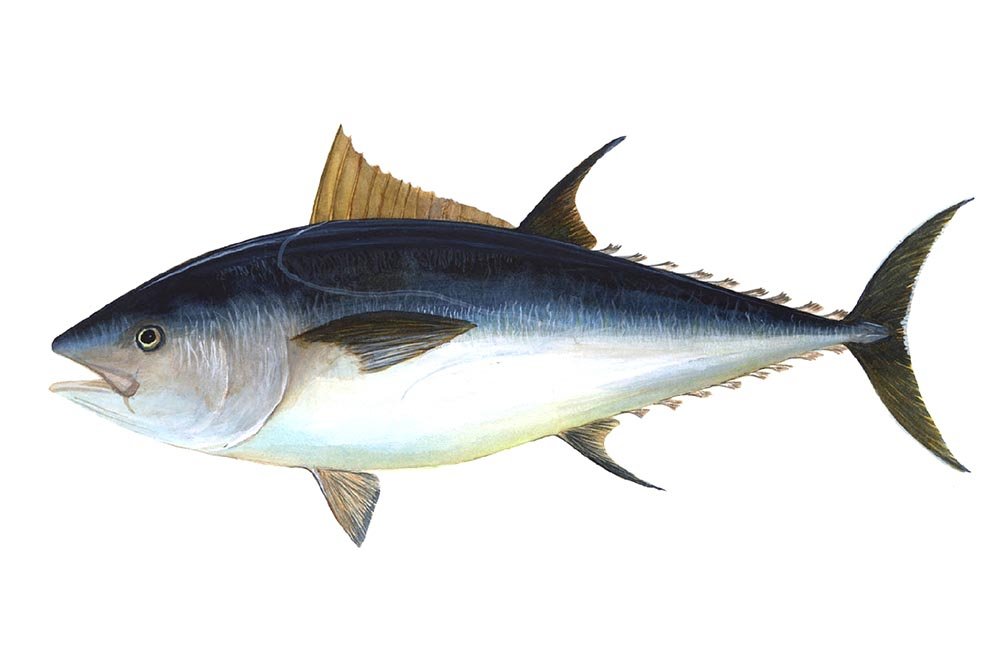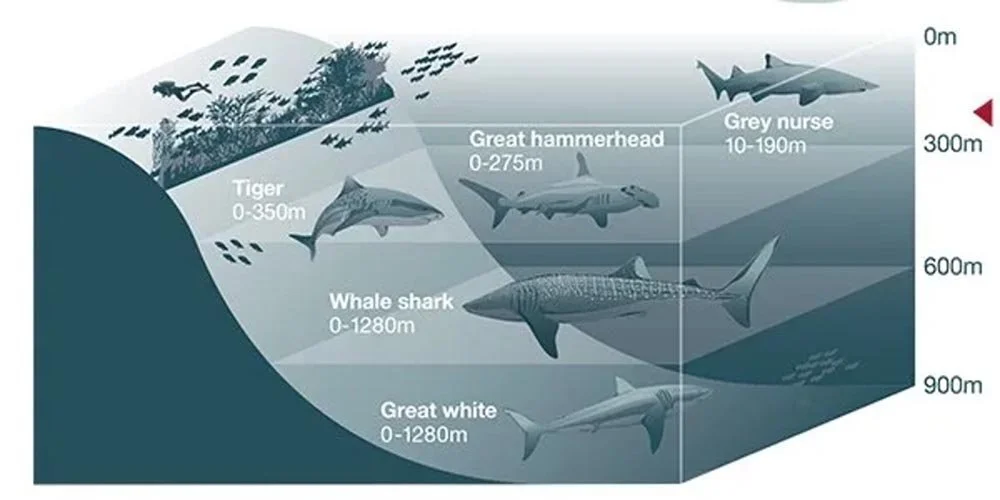Call of the Deep:
What Ocean Animals Teach Us
About the Deep Sea
Before reading the article, you may want to first read the comprehension questions (scroll to end).
Boys will choose and answer 10 odd-numbered questions; girls will choose and answer 10 even-numbered questions.
Exploring the Deep Sea
Some of the biggest animals in the ocean, like whales and sharks, can dive very deep into cold, dark waters.
Scientists want to know what they are doing down there, but it's hard for people to go that deep. So, researchers have found a clever way to learn more: they put special tags on animals to track where they go and what they do.
Simon Thorrold is a scientist who attaches tags to whale sharks. These tags record temperature, depth, light, and even sounds or short videos. Whale sharks and other animals with tags help scientists explore the deep sea—like ocean detectives!
Why Dive So Deep?
Animals often dive to find food. The deep ocean has layers filled with small fish, squid, and other sea creatures.
One layer is called the twilight zone (200 to 1,000 meters deep), and another is the midnight zone (1,000 to 4,000 meters deep). These zones are very dark and cold, and the pressure is high, but many animals still go there.
Researchers have found that diving deep is common for many animals, including tuna, swordfish, sea turtles, penguins, whales, and seals. The deepest-diving mammal is the Cuvier’s beaked whale, which went almost 3,000 meters deep!
Some animals dive many times a day. Others dive in different ways—some go down fast and come up fast; others stay at the bottom longer. These different dive shapes may mean the animals dive for more than just food.
Other Reasons to Dive
Besides finding food, animals may dive to:
Hide from predators
Cool off their bodies
Help find their way (navigation)
Communicate over long distances
Some fish, like the Chilean devil ray, dive very deep and stop at certain layers to look for food. They also have special blood vessels to keep their brains warm.
Sharks also dive deep. They follow warm water currents called eddies where food is easier to find. Tags show that sharks use these warm eddies to dive deeper and stay longer without getting cold.
Smart Tags Show the Way
Today’s tags can do amazing things! Some record sound, like the clicking of whales hunting. Others have video cameras that turn on when the animal makes a move to catch prey.
Pilot whales use sound to hunt. Scientists put sound-recording tags on them and found that they click as they dive. When they are close to prey, the clicks turn into a buzz. That means they are about to attack.
Northern elephant seals wear tags with video cameras. One seal filmed itself catching deep-sea fish. Scientists have now collected hours of seal video showing them hunting lanternfish, squid, and other deep-sea creatures.
SAFETY
Some animals dive to stay safe. Tuna and elephant seals have been seen diving very deep to escape predators. In one case, a tuna dove over 1,500 meters, probably to avoid being eaten.
Elephant seals also rest deep underwater. It's safer than staying near the surface, where sharks and killer whales might attack.
Navigation and More
Some animals dive to help them navigate. They may use Earth's magnetic field to guide them. For example, hammerhead sharks and leatherback turtles are known to sense magnetic signals and might dive deep to check their route.
Bluefin tuna may dive to cool off. They live in cold waters but travel to warm places to have babies. To avoid overheating, they dive below 500 meters.
And in one ocean zone, sound travels far. Whales may dive into this area to talk to each other over long distances.
The Future of Ocean Discovery
Scientists are excited about the new tools they can use to learn more about deep-diving animals. They hope to create better video tags that work in low light and can be used on more types of fish.
Who knows? Maybe one day we’ll all get to watch movies made by sharks, whales, and other sea creatures as they explore the deep!
► COMPREHENSION QUESTIONS
— please answer with complete sentences
Boys — choose and answer 10 odd-numbered questions
Girls — choose and answer 10 even-numbered questions
What do scientists use to study deep-diving animals?
Why is the deep ocean hard for humans to explore?
What is the twilight zone?
Name two animals that dive into the twilight zone.
What kind of fish holds the deepest dive record?
What is the midnight zone?
What are some reasons animals dive besides looking for food?
What do sharks use eddies for?
What is an adaptation?
Why do pilot whales click when diving?
What happens when a pilot whale gets close to prey?
What kind of animal took video of hunting deep-sea fish?
What is bioluminescence?
What helps some animals keep their brains warm when diving?
What are predators?
What are prey?
Why do elephant seals rest deep underwater?
What does sonar help scientists do?
What did a tagged tuna do to escape a predator?
What do scientists hope to improve about ocean tags?
Why might whales dive to certain sound zones?
What does a navigation cue help animals do?
How do animals sense navigation cues in the ocean?
Why do bluefin tuna dive in warm waters?












